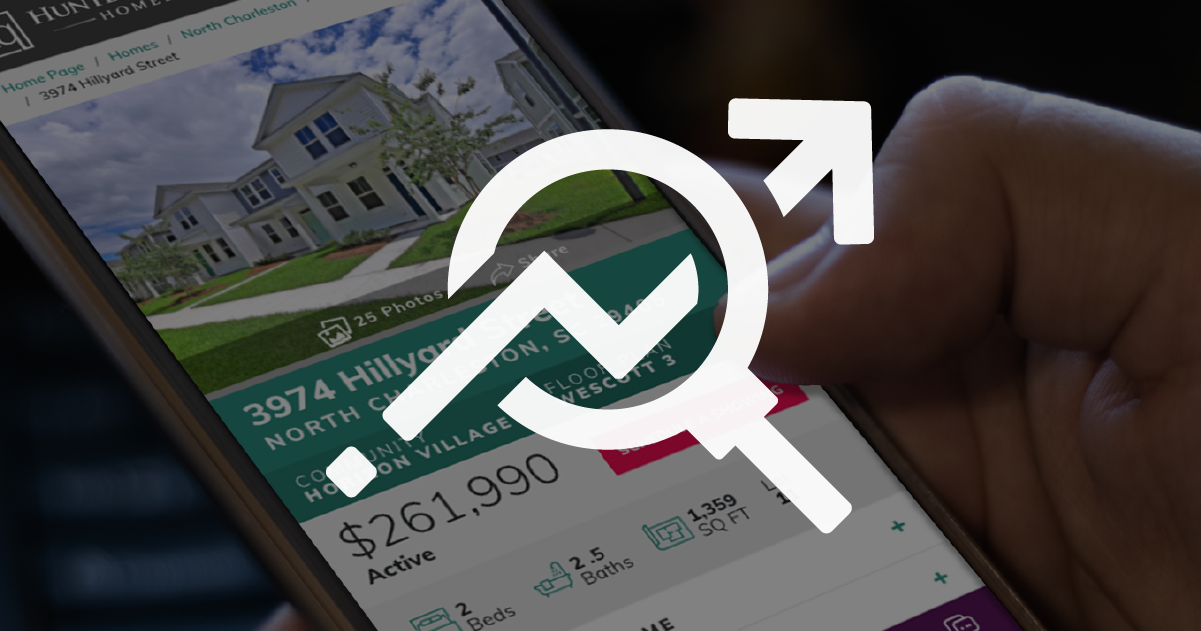
ResourcesEverything in One Place
Data Driven: It’s up, it’s down - but what does that mean?

Now that we discussed some of the metrics you’ll find in Google Analytics, like users, sessions, and pageviews let's put them to context with how we measure web engagement. But first, let’s start with an often misunderstood metric: bounce rate.
Bounce rate is an engagement metric that generally has a negative connotation like it’s something to avoid. It’s generally thought that a high bounce rate is bad and a low bounce rate is good. But that’s not always the case.
First, it’s good to define exactly what bounce rate is. A bounce on your website is an instance where a user lands on your website and views only one page before leaving. They don’t look around, they don’t convert (generally), they don’t do anything - they just leave.
The bounce rate is calculated by dividing the number of sessions that have a single pageview by the overall number of sessions during a given period of time.
As stated before the bounce rate is an engagement metric. Website engagement is good for SEO and great for judging the role that a website plays in the buyer journey. So naturally, a low bounce rate should be a good thing, right? Generally yes, but there are a few instances where we expect to see a higher bounce rate.
One place we usually see a higher bounce rate is a Google Ad or Facebook ad for a specific home. And if you think about it, it makes sense. Generally speaking, users navigate from an area, then to a community, then to an available home or floor plan. The available home or floor plan is often the final page is a sequence, so by sending traffic to it, a lot of times we see users simply look and leave. If your bounce rate is in the 60%s for these pages, don’t be worried, that's pretty normal.
Users that are looking for specific bits of information, like an address or phone number can also contribute to a higher bounce rate. But, you should have that information on Google My Business.
Another bounce rate anomaly we want to look out for is a wildly low bounce rate. This can mean that there is something technically wrong with the website. If you see a bounce rate below 20% for the entire website, check with your web provider.
Now let’s take a look at some numbers and we can see if your bounce rates are where they should be. Your overall bounce rate for your entire website should be somewhere between 30-50% with some fluctuations if you’re running a lot of ads. Organic traffic from search engines like Yahoo, Bing, and Google should be among the lowest, somewhere between 20-40%. Direct traffic can be a tad higher, somewhere in the 40-50% range. By far, the high bounce rate we see comes from advertising, usually 50-70%.
We talk a lot about the buyer journey when it comes to new homes. We generally see users that have a higher bounce rate and don’t convert are in the awareness stage. They’re still figuring out if a major change in their life is right for them. There is a good chance they were served a Facebook or Google ad if they’ve exhibited behavior consistent with a home buyer that’s just begun their journey.
A user in the consideration stage generally has the lowest bounce rate. This is the part in the journey where they’re trying to figure out if new construction is for them, and if it is, which builder, neighborhood, and floor plans are in their price range. This is prime time for browsing Matterport tours, video tours, and the most important type of content: pictures!
Finally, those that convert generally don’t have great conversion metrics like pages per session or time one site. They may have low time on site and only one or two pages per session. Depending on how the website is built, if a form submission doesn’t bring up a landing page, they could have a high bounce rate, too. But of course, none of that matters if they convert!
If your bounce rate is extremely high or extremely low, it could be something going wrong with your Google Analytics. Check your web provider if you see a 5% bounce rate.
So there! Something as simple as a bounce rate can have a lot behind it. It’s all about knowing where your traffic comes from and the purpose for the content on your website. If you need any help making sense of these numbers, we’re always here to help. Contact Amber to schedule a one-on-one and we’ll demystify your website analytics.
Latest Posts
August 12, 2025 | Webinar
The Buying Power Calculator Webinar Replay
May 12, 2025 | Blog
The Digital-First Homebuyer—How Builders Can Capture The Scrolling Buyer
February 19, 2025 | EBook
2024 Builder Data Year In Review
December 19, 2024 | Blog
Mortgage Rate Projections: Two Paths Forward or Uncharted Territory?
October 17, 2024 | Podcast
INBOUND 2024: AI Trends, HubSpot Innovations and More
October 3, 2024 | Webinar
We Know What Works Replay
October 1, 2024 | Blog
Buyers Saved Just $20/Month on Their Mortgage This Year – Here’s Why It’s Happening
September 26, 2024 | Blog
How the Fed Rate Cut Could Impact Mortgage Rates: What Builders Need to Know
September 19, 2024 | Blog
We Know What Works—Builder Designs’ Proven Strategies for 2025
Previous Article

Avoiding Hot Market Syndrome
Next Article

